- JST Home
- /
- Strategic Basic Research Programs
- /
 PRESTO
PRESTO- /
- project/
- Exploring Quantum Frontiers Through Quantum-Classical Interdisciplinary Fusion/
- [Quantum frontiers] Year Started : 2023
[Quantum frontiers] Year Started : 2023
Mizuki Uenomachi
Development of non-invasive quantum diagnostic technology via nuclear spin
Grant No.:JPMJPR23F1
Researcher
Mizuki Uenomachi
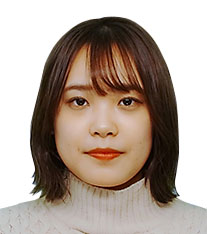
Associate Professor
Institute of Integrated Research
Institute of Science Tokyo
Outline
There is no technology that can simultaneously detect microenvironmental information and its position deep within the body. In this study, I will develop a novel non-invasive quantum diagnostic technology that utilizes the nuclear spin of cascade nuclides emitting multiple photons successively as a “quantum sensor” to simultaneously obtain microenvironmental information and radioactive drug accumulation. This study aims to establish the world’s first imaging technology that extracts information on electromagnetic fields, temperature, pH, etc. deep within the body by performing principle and experimental verifications for medical applications, and physically elucidating photon correlations.
Kazuhisa Ogawa
Large-scale superconducting quantum computing using the standing ZZ interaction
Grant No.:JPMJPR23F2
Researcher
Kazuhisa Ogawa
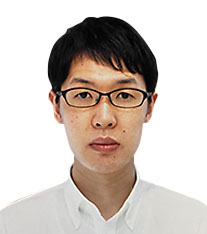
Associate professor
Center for Quantum Information and Quantum Biology
The University of Osaka
Outline
The scalability problem is becoming more and more serious as quantum computers are scaled up. In this study, we propose a new scheme that uses the standing ZZ interaction as a two-qubit gate, and theoretically and experimentally verify the effectiveness of the proposed scheme against the three problems of excessive number of control lines, frequency collision, and burden on microwave control devices.
Takuya Okuda
Approaches to the simulation of lattice gauge theories based on quantum information theory
Grant No.:JPMJPR23F3
Researcher
Takuya Okuda
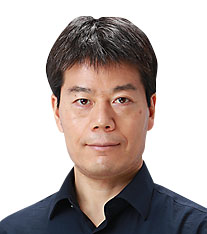
Assistant Professor
Graduate School of Arts and Sciences
The University of Tokyo
Outline
The aim of this research is to develop efficient algorithms to simulate lattice gauge theories, improve precision, and make it possible to analyze the problems that have been intractable. I will advance the theories of circuit-based as well as measurement-based quantum simulation methods, propose new algorithms, and implement them on real quantum computers. I will also develop new algorithms for the simulation of lattice gauge theories in the Hamiltonian formalism through efforts to perform classical simulations using tensor network techniques.
Hiroki Kutsuma
Development of photon-number-resolving scalable single photon detectors
Grant No.:JPMJPR23F4
Researcher
Hiroki Kutsuma
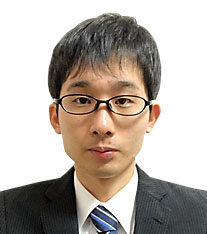
Assistant Professor
Graduate School of Engineering
Tohoku University
Outline
The project goal is to create photon-number-resolving scalable single photon detectors for optical quantum computers with knowledge from different fields such as superconducting, microwave circuits, photon detectors, and amplifiers. Here, I will demonstrate photon-number-resolving microwire detectors connected to superconducting parametric amplifiers.
Tetsushi Takano
Integration of cold-atom devices with waveguides
Grant No.:JPMJPR23F5
Researcher
Tetsushi Takano
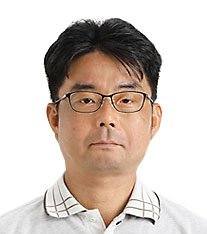
Project-specific Associate Professor
The Hakubi Center for Advanced Research
Kyoto University
Outline
I will trap neutral thulium atoms by the evanescent light of the standing waves which propagate an optical waveguide. Thulium atoms have a clock transition, which is extremely insensitive to an electric field (for example, about 1/4000 of strontium atoms) since fully occupied outer shells of thulium atoms act as an electrostatic shield. This feature will make thulium atoms robust against decoherence even near the waveguide surface. Furthermore, by controlling the disturbance due to the evanescent light using the magic wavelength method, the optical coherence of the thulium atoms is expected to be more than ms. This device is considered to be suitable for the platform of the quantum communications.
Nayuta Takemori
Quantum new testbeds for quasiperiodic systems by k-RDM estimation quantum algorithm
Grant No.:JPMJPR23F6
Researcher
Nayuta Takemori
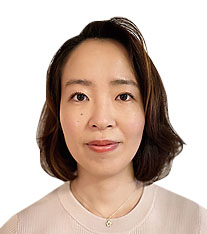
Associate Professor
Graduate School of Science
The University of Osaka
Outline
We present the development of a quantum subspace expansion method using kth-order reduced density matrix (RDMs) estimation via the Fermionic shadow. Leveraging the Fermionic shadow streamlines the evaluation of k-RDMs, and when combined with techniques for approximating higher-order RDMs with lower-order ones, it significantly reduces the computational cost required for quantum subspace expansion. As a testbed for demonstrating the quantum advantage necessitating RDMs, we focus on quasiperiodic systems. This novel approach not only contributes to the advancement of quantum algorithms for obtaining k-RDMs but also showcases their applicability in the exploration of quantum novelty in quasiperiodic systems.
Tatsumi Nitta
Co-creation of superconducting sensors and dark matter searches
Grant No.:JPMJPR23F7
Researcher
Tatsumi Nitta
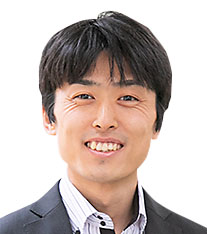
Assistant Professor
QUP
KEK
Outline
Superconducting qubits which are one of the key elements for quantum computing can be utilized as a single photon sensor. I develop a specific type of superconducting qubits for realizing the frequency tunability of the photon sensor which is never realized. Furthermore, I apply this sensor to dark matter searches and realize wideband dark matter searches.
Akito Noiri
Development of a scalable unit cell of a silicon quantum computer
Grant No.:JPMJPR23F8
Researcher
Akito Noiri
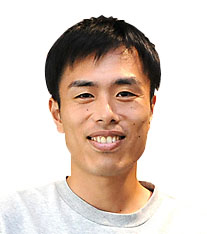
Research Scientist
Center for Emergent Matter Science
Riken
Outline
The target of this project is to develop a scalable unit cell structure of a silicon quantum computer based on a coherent shuttling of a qubit between quantum dots. A relationship between a shuttling performance and a shuttling distance will be elucidated. With this insight, a unit cell structure which solves a dense wiring problem, a major challenge of a scaling up, will be designed. The proposed unit cell can maintain a demonstrated high performance of qubit operations in a scaling up.
Ryu Hayakawa
Quantum topological machine learning and its computational complexity
Grant No.:JPMJPR23F9
Researcher
Ryu Hayakawa
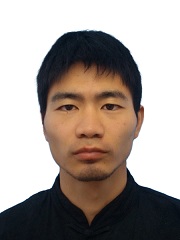
Assistant Professor
The Hakubi Project
Kyoto University
Outline
Topological data analysis has been gathering attention as an application of quantum computing with potential significant speedup over the classical counterparts. In this project, I will construct a quantum machine learning algorithm that is based on quantum topological data analysis. Moreover, I will study the computational complexity of the homology problems, especially, the relationships with Hamiltonian complexity. Through the analysis of the computational complexity of the homology problems, I will also try to establish the theoretical foundation for the quantum advantage in the task of topological machine learning.
Kosuke Fukui
Hybrid quantum networks with fault-tolerant light-matter interconnects
Grant No.:JPMJPR23FA
Researcher
Kosuke Fukui
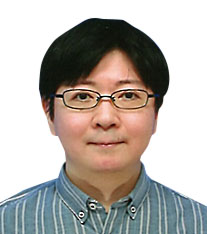
Project Researcher
School of Engineering
The University of Tokyo
Outline
Towards large-scale quantum information processing, we propose a scheme to realize fault-tolerant quantum network through the integration of complementary quantum architectures encompassing optical and matter qubits. We develop a methodology for constructing quantum networks via quantum error-correcting codes with light, alongside a technique for realizing noise-tolerant light through light-matter interactions. This project will establish a theoretical platform for a quantum network that fully harnesses both optical and matter qubits.
Tomohiro Fukushima
Modification of electrochemical energy conversion based on the strong coupling phenomena
Grant No.:JPMJPR23FB
Researcher
Tomohiro Fukushima
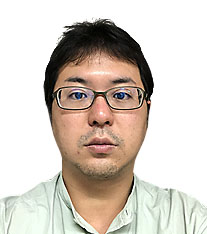
Lecturer
Faculty of Science
Hokkaido University
Outline
This research project aims to innovate electrochemical energy conversion science through strong coupling. Controllable vacuum field can be designed by focusing on localization and strength of vacuum electric field. Based on the control of water properties, ionic conduction and electrocatalytic property modulation will be evaluated spectroelectrochemically to clarify the contribution of the coupling strength to the change in properties. Furthermore, by investigating the strong coupling effects of heat and work, I will elucidate the basic science and pioneer applications to energy conversion.
Hayata Yamasaki
Theoretical foundation of time-efficient constant-space-overhead fault-tolerant quantum computation
Grant No.:JPMJPR23FC
Researcher
Hayata Yamasaki
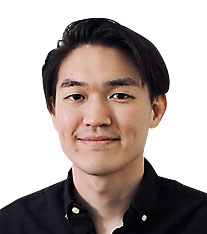
Associate Professor
Graduate School of Information Science and Technology
The University of Tokyo
Outline
This research aims to advance the theory of good quantum low-density parity-check codes based on high-dimensional expanders and employ these codes to establish fault-tolerant protocols achieving low space and time overheads. Furthermore, toward its implementation in an optical platform, the research aims to develop quantum resource theories and classical numerical simulation methods to support resource estimation. The expected results of this research establish a comprehensive theoretical foundation for realizing time-efficient constant-space-overhead fault-tolerant quantum computation.













